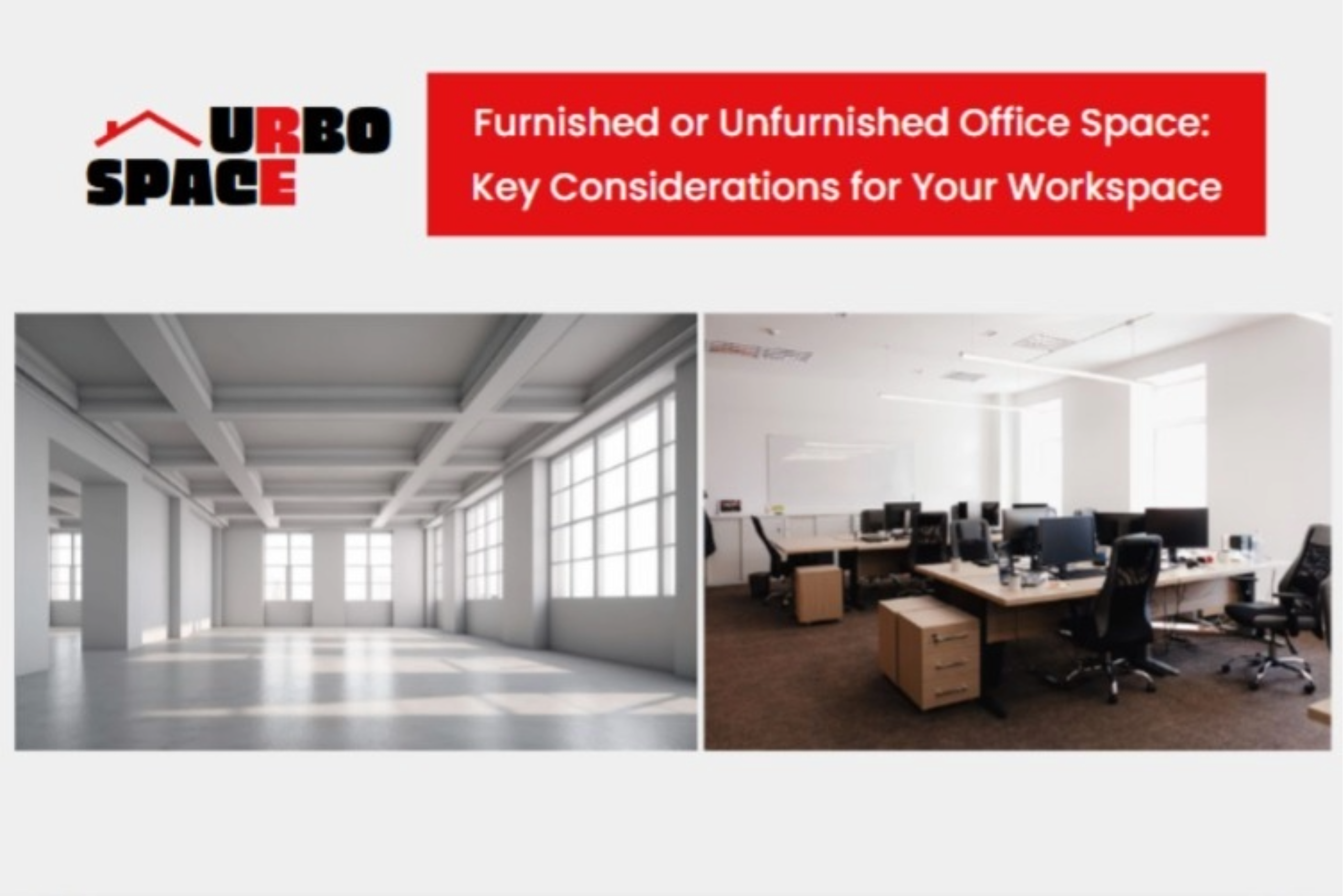
Furnished or Unfurnished Office Space: Key Considerations for Your Workspace
When looking for your ideal office space, a key consideration is whether to go for a furnished or unfurnished office. Furnished offices include essential furniture and equipment, allowing business owners to start operations immediately. In contrast, unfurnished spaces offer the flexibility to create a fully custom-built environment tailored to the business’s specific needs. Here are some factors to help guide your decision:
Time
Time plays a crucial role in business success. If you’re on the verge of closing a deal and need to be operational quickly, a furnished office can help you save time with its ready-to-use setup. However, if timing is not a critical factor, an unfurnished office gives you the freedom to design interiors that align with long-term business goals.
Size of the Enterprise
For smaller organizations or start-ups, furnished offices are often more viable as they provide quick operational readiness without high initial costs. The flexibility to scale up without the hassle of setting up a new space can be advantageous. In contrast, larger and more established enterprises may benefit from the fully customizable option, as it better supports their brand positioning and allows them to craft a space suited to their workforce and needs.
Cost
Furnished offices offer initial savings since there’s no upfront investment required to make the space functional, and capital costs are low. However, the rental rates for unfurnished offices can be 30% to 40% lower than for furnished spaces, translating to monthly savings for business owners. On the flip side, outfitting an unfurnished office can come with substantial capital costs.
Infrastructure and Compliance Requirements
The right infrastructure and amenities help business owners operate smoothly and maintain employee satisfaction. For companies with strict requirements around network infrastructure, communication, data privacy, and sustainability (like green building compliance), an unfurnished space might be preferable. However, many furnished office providers now allow tenants to make adjustments to meet specific infrastructure needs.
Customization
One downside of furnished offices is limited customization, which can mean less flexibility for businesses that want a unique look or specific features. Additionally, the cost of managing and maintaining a furnished workspace can add up. Unfurnished offices provide extensive control over layout, furniture, and equipment but place the responsibility for repairs and maintenance on the tenant, which can be time-consuming and costly.
Conclusion
The choice between furnished or unfurnished office space depends on your business needs, budget, and growth plans. If you need help finding the right office to match your business requirements, reach out to us—we’ll help you make an informed decision.
#officespace #coworking #infrastructure #customization #cost #growth #urbospace
